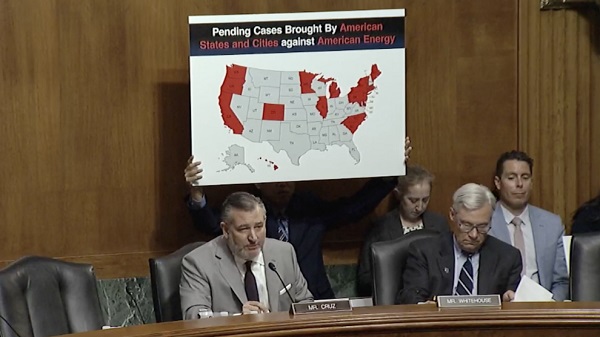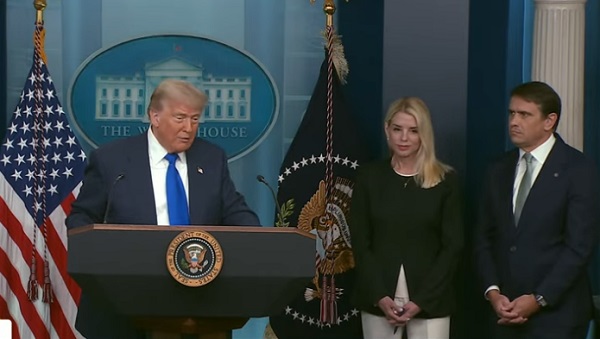Alberta
Indoor masking is back – Province taking action to reduce hospitalizations
Further actions to protect health system from COVID-19
Due to increasing COVID-19 transmission and rising hospital admissions, overwhelmingly amongst unvaccinated Albertans, temporary measures are needed to reduce transmission and prevent the health-care system from being overwhelmed.
Currently, more than 80 per cent of COVID-19 cases in hospital are unvaccinated, including 91 per cent of patients in intensive care.
“Vaccines are safe, effective, and a game-changer. This is why the current wave is different than what we’ve experienced before. While we do not need to return to the same widespread and dramatic measures we had in place earlier in the pandemic, unvaccinated Albertans in particular are still at risk and are placing a heavy load on our health-care system. This is why we are taking measured steps and introducing a new incentive program to encourage more Albertans to get the jab.”
“As I have always done, I use the best currently available evidence from Alberta and around the world to inform my recommendations to protect the health of Albertans. With hospitalization rates rising, it is important that we take additional steps to help reduce the spread of COVID-19. My ultimate goal continues to be to shift from pandemic to endemic and put more focus on the complete health of Albertans – we must learn to live with COVID. Getting vaccinated today is the best possible way for us to get there.”
New vaccine incentive program
A one-time incentive of $100 is now available for all Albertans age 18 or older who receive a first or second dose of vaccine between Sept. 3 and Oct. 14.
This incentive is intended to encourage unvaccinated Albertans to get protected as soon as possible.
After vaccination, eligible Albertans will be able to register online. Alberta Health will validate registrations against provincial immunization data. This website will be available starting on Sept. 13. If Albertans do not have access to a computer, they can contact 310-0000 for assistance, starting on Sept. 13.
Temporary measures
- The province will make masks mandatory for all indoor public spaces and workplaces starting Sept. 4 at 8 a.m. Schools are not required to implement masking but school boards will continue to set COVID-19 management policies as they deem appropriate.
- Also, as of Sept. 4 at 8 a.m., restaurants, cafés, bars, pubs, nightclubs and other licensed establishments will be required to end alcohol service at 10 p.m.
- In addition, Albertans are encouraged to limit in-person contacts. To support this, the province strongly recommends that unvaccinated Albertans limit their indoor social gatherings to close contacts of only two cohort families up to a maximum of 10 people.
- It is also recommended that employers pause their plans to have staff return to work and instead continue with work-from-home measures. If employees are working on location, employees must mask for all indoor settings, except in work stations or where two-metre physical distancing or adequate physical barriers are in place.
Additional vaccine incentives
All Albertans who have received two doses of vaccine and are aged 18 and over are eligible for the remaining $1-million draw for the Open for Summer Lottery. To register and for complete details, visit alberta.ca/lottery. The final draw closes Sept. 23.
Fully protected Albertans are also eligible to enter the Outdoor Adventure vaccine lottery. To register and for complete details, visit alberta.ca/outdoor-adventure-
Book an appointment and get vaccinated
All Albertans can book appointments via AHS online or by calling 811, or through participating pharmacies. Walk-in appointments for first doses are also available. For schedule and locations, visit ahs.ca/vaccine.
Updated modelling
Based on information available in mid-August, an updated projection of estimated COVID-19 cases and hospitalizations to the end of September was developed. Current actual data is trending toward the high end of the projections, therefore numbers may exceed the projections. Peaks in the model are only estimates, and actual peaks may be higher and later than anticipated if current growth trends continue.
This provincial modelling shows intensive care unit patients could possibly peak at around 180 in the medium scenario, although if accelerating trends continue, numbers could reach or exceed the currently projected high scenario at 290.
Other hospitalizations (non-ICU) are currently trending toward the high scenario, with a potential peak of 700 in the next several weeks. If the high scenario peaks are reached, this would mean a greater combined impact on the acute care system than in all previous waves, and if changes in transmission cause greater spread, these numbers could be exceeded.
Modelling is for the entire province. Some regions will experience different case and hospitalization statistics per capita; this will particularly be expected in those areas with lower rates of vaccinations.
Modelling is a dynamic process where there are constant comparisons against observations versus projections. When these comparisons deviate, the model assumptions are re-evaluated, which may change with new information such as outbreak events.
This modelling is now available online. A separate evidence summary has also been posted, including key assumptions and considerations, hospital impact modelling that was developed in June to inform changes announced in late July, and a reference list for further reading.
Alberta
Alberta judge sides with LGBT activists, allows ‘gender transitions’ for kids to continue

From LifeSiteNews
‘I think the court was in error,’ Alberta Premier Danielle Smith has said. ‘There will be irreparable harm to children who get sterilized.’
LGBT activists have won an injunction that prevents the Alberta government from restricting “gender transitions” for children.
On June 27, Alberta King’s Court Justice Allison Kuntz granted a temporary injunction against legislation that prohibited minors under the age of 16 from undergoing irreversible sex-change surgeries or taking puberty blockers.
“The evidence shows that singling out health care for gender diverse youth and making it subject to government control will cause irreparable harm to gender diverse youth by reinforcing the discrimination and prejudice that they are already subjected to,” Kuntz claimed in her judgment.
Kuntz further said that the legislation poses serious Charter issues which need to be worked through in court before the legislation could be enforced. Court dates for the arguments have yet to be set.
READ: Support for traditional family values surges in Alberta
Alberta’s new legislation, which was passed in December, amends the Health Act to “prohibit regulated health professionals from performing sex reassignment surgeries on minors.”
The legislation would also ban the “use of puberty blockers and hormone therapies for the treatment of gender dysphoria or gender incongruence” to kids 15 years of age and under “except for those who have already commenced treatment and would allow for minors aged 16 and 17 to choose to commence puberty blockers and hormone therapies for gender reassignment and affirmation purposes with parental, physician and psychologist approval.”
Just days after the legislation was passed, an LGBT activist group called Egale Canada, along with many other LGBT organizations, filed an injunction to block the bill.
In her ruling, Kuntz argued that Alberta’s legislation “will signal that there is something wrong with or suspect about having a gender identity that is different than the sex you were assigned at birth.”
She further claimed that preventing minors from making life-altering decisions could inflict emotional damage.
However, the province of Alberta argued that these damages are speculative and the process of gender-transitioning children is not supported by scientific evidence.
“I think the court was in error,” Alberta Premier Danielle Smith said on her Saturday radio show. “That’s part of the reason why we’re taking it to court. The court had said there will be irreparable harm if the law goes ahead. I feel the reverse. I feel there will be irreparable harm to children who get sterilized at the age of 10 years old – and so we want those kids to have their day in court.”
READ: Canadian doctors claim ‘Charter right’ to mutilate gender-confused children in Alberta
Overwhelming evidence shows that persons who undergo so-called “gender transitioning” procedures are more likely to commit suicide than those who are not given such irreversible surgeries. In addition to catering to a false reality that one’s sex can be changed, trans surgeries and drugs have been linked to permanent physical and psychological damage, including cardiovascular diseases, loss of bone density, cancer, strokes and blood clots, and infertility.
Meanwhile, a recent study on the side effects of “sex change” surgeries discovered that 81 percent of those who have undergone them in the past five years reported experiencing pain simply from normal movements in the weeks and months that followed, among many other negative side effects.
Alberta
Alberta Independence Seekers Take First Step: Citizen Initiative Application Approved, Notice of Initiative Petition Issued

Alberta’s Chief Electoral Officer, Gordon McClure, has issued a Notice of Initiative Petition.
This confirms a Citizen Initiative application has been received and the Chief Electoral Officer has determined the requirements of section 2(3) of the Citizen Initiative Act have been met.
Approved Initiative Petition Information
The approved citizen initiative application is for a policy proposal with the following proposed question:
Do you agree that Alberta should remain in Canada?
The Notice of Initiative Petition, application, and statement provided by the proponent are available on Elections Alberta’s website on the Current Initiatives Petition page.
As the application was received and approved prior to coming into force of Bill 54: Election Statutes Amendment Act, the Citizen Initiative process will follow requirements set out in the Citizen Initiative Act as of June 30, 2025.
Next Steps
- The proponent must appoint a chief financial officer within 30 days (by July 30, 2025).
- Once the 30-day publication period is complete and a chief financial officer has been appointed, Elections Alberta will:
- issue the citizen initiative petition,
- publish a notice on the Current Initiatives Petition page of our website indicating the petition has been issued, specifying the signing period dates, and the number of signatures required for a successful petition, and
- issue the citizen initiative petition signature sheets and witness affidavits. Signatures collected on other forms will not be accepted.
More information on the process, the status of the citizen initiative petition, financing rules, third party advertising rules, and frequently asked questions may be found on the Elections Alberta website.
Elections Alberta is an independent, non-partisan office of the Legislative Assembly of Alberta responsible for administering provincial elections, by-elections, and referendums.
-

 Brownstone Institute2 days ago
Brownstone Institute2 days agoFDA Exposed: Hundreds of Drugs Approved without Proof They Work
-

 Energy1 day ago
Energy1 day agoChina undermining American energy independence, report says
-

 Business1 day ago
Business1 day agoTrump on Canada tariff deadline: ‘We can do whatever we want’
-

 Automotive1 day ago
Automotive1 day agoElectric vehicle sales are falling hard in BC, and it is time to recognize reality.
-

 Business1 day ago
Business1 day agoEurope backs off greenwashing rules — Canada should take note
-

 Automotive1 day ago
Automotive1 day agoPower Struggle: Electric vehicles and reality
-

 Business8 hours ago
Business8 hours agoCanada Caves: Carney ditches digital services tax after criticism from Trump
-

 Crime8 hours ago
Crime8 hours agoSuspected ambush leaves two firefighters dead in Idaho






